Castlevania Dominus Collection is the latest port of some of Konami's best games. It focuses primarily on the three Castlevania titles released for the Nintendo DS as well as a port and remake of the old arcade game, Haunted Castle. These three games (and Haunted Castle) represent basically the only major Castlevania games not yet present on modern consoles. As the saying goes, they saved the best for last.
All three of the DS games in the collection contain the same rough bonus features. This includes the ability to save and load anywhere, as well as a temporary "rewind" feature that allows you to backtrack several seconds. The second DS screen can be customized to take up more or less of the screen, or even to display the map and status screens at the same time. (This was something you had to choose on the DS.) It's nothing too fancy, but it's an overall welcome set of options.
Dawn of Sorrow
Dawn of Sorrow, the direct sequel to Game Boy Advance's Aria of Sorrow, is about as straightforward of a sequel as you can get. It follows Soma Cruz as he again fights the forces of evil and chaos as they attempt to manipulate him into reviving Dracula. This time, he's going up against an evil cult, but in a lot of ways, it is a very similar story to the first GBA game.
This is also true of the core gameplay. The major gimmick of Dawn of Sorrow is that almost every single enemy in the game has a soul that they can drop when defeated. Each soul can be equipped to Soma to give him abilities and attacks. Some of these are passive bonuses, like a double-jump or increased strength while others are damage-dealing weapons and abilities. Unique to Dawn of Sorrow is the ability to spend these souls to craft powerful new weapons.
Of the three games in the collection, Dawn of Sorrow has probably seen the most genuine adjustments. The original version was released during the time when anything on the DS required touch-screen functionality, regardless of how well they fit. In Sorrow, there are a couple of skills that rely on the touch-screen mechanic, but the most annoying and common is the "Seal" mechanic. After defeating a boss, you had to quickly draw a seal on the screen or the boss would recover and heal. It was annoying enough that it detracted from the rest of the experience. Castlevania Dominus Collection allows you to play a quick QTE minigame to perform the seal. It's a huge improvement and means you're not stuck fumbling with a stylus, so the game is a lot more fun. If you prefer the old method, you can still use the touch-screen/mouse and keyboard, so there's no real negative.
Of the three games, Dawn of Sorrow has aged the most. It's still an excellent game, but the forced touch-screen mechanics, even nerfed as they are, stand out and not in a good way. The crafting mechanic is neat, but it also means that you find far fewer cool new weapons around the castle, as most of the good stuff comes from crafting. It also feels a lot like a retread of Aria of Sorrow, which can be a touch disappointing. It makes up for it by having one of the coolest bonus modes, whereupon you get to a loose remake of Castlevania III starring Julius, Yoko and Alucard instead of Trevor, Sypha and Alucard, including a new final boss. It's a neat bonus way to play through the game, and it gives the title some much-needed bonus value.
Portrait of Ruin
The second game in the collection is Castlevania: Portrait of Ruin. A sequel to the semi-obscure Genesis exclusive Castlevania: Bloodlines, it follows the son of that game's protagonist, Jonathan Morris, as well as his childhood witch friend, Charlotte Aulin. The two are tasked with investigating the reappearance of Dracula's castle, only to find it has been taken over by a new vampire named Brauner.
Portrait of Ruin varies things by providing two protagonists, Jonathan and Charlotte. Jonathan specializes in physical damage, and Charlotte specializes in magic. You can swap between them at the touch of a button, but both characters share the same HP and MP bars. After some upgrades, both characters can be out at once for combination attacks and to use their abilities without being fully summoned. While you don't technically have to use two characters outside of specific areas, mastering both is necessary to truly master the game.
At its heart, Portrait of Ruins is probably the most by-the-book entry in the collection, and the dual character gimmick adds some flavor. While you explore the castle, you're also exploring Brauner's portraits, which can take you to different locations, but these locations get recycled. It has more of a variety of items to find and equip than Dawn of Sorrow, but Jonathan has a shockingly tedious "mastery" system to upgrade his abilities; you're unlikely to upgrade anything but the most basic abilities without grinding.
There don't seem to be any significant changes to Portrait of Ruin in the collection. The only one I noticed was that it seemed to have gotten a heavier retranslation than the other two entries. A lot of the dialogue sounds more casual, including Jonathan's frequent use of "no problem" as a catchphrase. It's not something distracting if you'd never played the original, but it stood out to me a lot.
Portrait of Ruin is probably the most standard Metroidvania of the three games. It's a solid and enjoyable Castlevania title that does a good job of being fun. It's my least favorite of the three games, but that's like choosing my least favorite slice of cake rather than it being a genuine criticism. It has enough distinct and fun elements that it's worth playing entirely for its own merits.
Order of Ecclesia
The third game in the collection — and the last game done by Koji Igarashi before he left Capcom — is arguably the culmination of what made the DS and GBA Castlevania games great. It follows Shanoa, a magician who is a member of the mysterious Order of Ecclesia, a group dedicated to fighting evil in the absence of the Belmonts. Shanoa can use powerful glyphs that grant her magical powers. However, her first attempt to absorb and use the Dominus glyphs goes awry when her brother Albus steals them, leaving Shanoa with amnesia and bereft of most of her powers. Now she sets out to recover the Dominus glyphs and figure out the reason for Albus' betrayal.
Order of Ecclesia makes a significant change to the core combat mechanics of the GBA/DS Castlevania titles. Instead of finding and equipping weapons, you find glyphs, which are magical powers that can be used as attacks. While this does contain the standard swords, axes, spears and so on, it also includes fireballs, lightning spells, summoned monsters and more. These powers are governed by your magic meter, which functions akin to a stamina meter. Using attacks drains it, but it refills very rapidly once you stop. You can even combine glyphs for special effects or double up on them to attack faster.
Also, a change is that the game isn't confined to one castle. Instead, you spend most of the time traveling from location to location. Some of these areas are more complex zones with hidden areas and secrets, while others can be more linear (like older Castlevania titles), where the primary challenge is overcoming hordes of enemies. It cuts away some of the exploration that makes Metroidvania-style games so fun, but it makes up for it with some more engaging gameplay.
If there were any notable changes in Order, I didn't see them. The original game was already well polished and free of gimmicks, and the port seems to contain everything expected. Even the translation changes seemed minimal to nonexistent, with a lot of lines having gone unchanged.
Order of Ecclesia is worth the cost of the collection alone. It's a top-notch Metroidvania with incredibly engaging gameplay, beautiful visuals, and some of the best moments in any Castlevania game to date. It is tougher than Dawn and Portrait, and it demands you use a variety of abilities and attacks — and it feels fun throughout. Even if it weren't included with two other excellent games, Order would be a standout entry in any collection.
Haunted Castle and Haunted Castle: Revisited
The last entries in the collection are two versions of the same game. Haunted Castle is functionally an alternate version of the original Castlevania game, which sees Simon Belmont rushing off to slay Dracula and save his kidnapped bride. There's no real complexity here, just a big bad, a kidnapped bride, and a hero who saves the day. That was the plot of roughly 70 percent of video games when Haunted Castle was originally released.
The original 1988 Haunted Castle, which is the first of the games, was designed for arcades instead of home consoles, and it shows. It's a classic side-scrolling beat-'em-up that tends to focus more on combat and less on platforming and adventure. It's also a punishingly difficult game that seems designed to eat as many quarters as possible. Expect a lot of cheap-feeling and punishing deaths and some genuinely awkward controls.
Haunted Castle isn't very good. The gameplay feels clunky, it's pretty ugly, and even as a fan of old-school arcade games, I didn't get a lot out of it. The only memorable thing about it is the connection to the Castlevania franchise, and Simon Belmont's story has been remade and retold often enough that there are better versions of it to play. I can see it being a curiosity to experience once or twice, but I doubt anyone buying Castlevania Dominus Collection will see much reason for it.
That is where Haunted Castle: Revisited comes in. A full-on remake of the game that's unique to the collection, Revisited is basically a flat-out improved version of the clunky original. It has a full graphical rework, smoother controls, and a ton of gameplay adjustments ranging from reduction of instant death pits to the ability to temporarily upgrade your whip. It's still an old-school arcade game, but it feels distinctly more enjoyable and engaging to play. If anything, having the original and this brand-new remake side-by-side shows how much an improvement it is.
Overall, Castlevania Dominus Collection is a fantastic collection of Castlevania games. The three DS titles alone are some of the best Metroidvania action to ever exist, and having them all in one convenient package is worth it. Some minor complaints aside, they are perfectly good ports of all three games. The arcade titles are less of a draw but a nice bonus. If you're a fan of Metroidvania titles, Castlevania, or blowing up vampires with cool powers, Castlevania Dominus Collection is one of the best purchases you can make.
Score: 9.0/10
More articles about Castlevania Dominus Collection




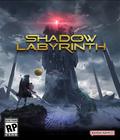



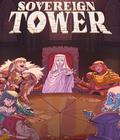
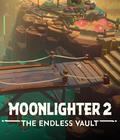
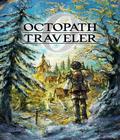
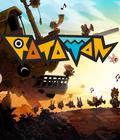

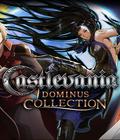 Relive three legendary Castlevania games previously released for the Nintendo DS between 2005 and 2008, as well Haunted Castle, the arcade version of Castlevania, and Haunted Castle Revisited.
Relive three legendary Castlevania games previously released for the Nintendo DS between 2005 and 2008, as well Haunted Castle, the arcade version of Castlevania, and Haunted Castle Revisited.







